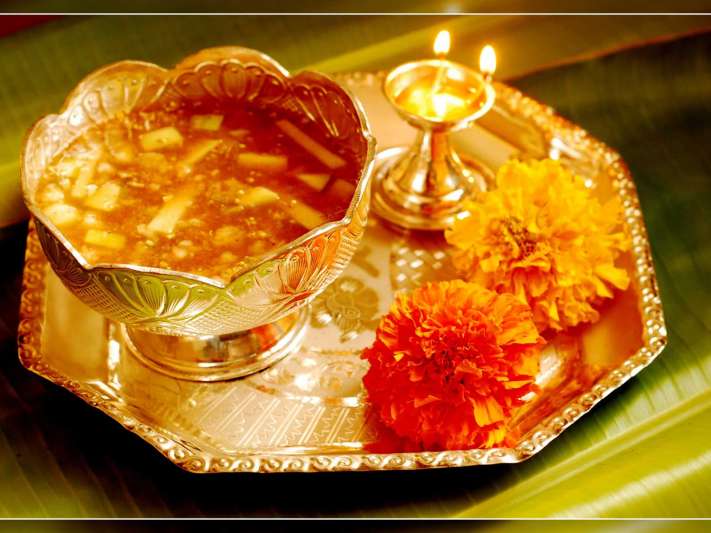The New Year’s of Hindus in Telangana, Andhra Pradesh and Karnataka is celebrated as Ugadi on the first day of the Hindu lunisolar calendar month of Chaitra which is also celebrated as Gudi Padwa in Maharashtra and Baisakhi in Punjab. This day is usually celebrated by people drawing colorful patterns on floor called kolams/muggu, mango leaf decorations on doors called torans, buying and giving gifts such as new clothes, giving charity to the poor, special bath followed by oil treatment, preparing and sharing a special food called pachhadi, and visiting Hindu temples.
The Ugadi Pachhadi is the most integral part of the festival. While the making of the pachhadi is not unknown to many people in these states, the significance and meaning behind this is something we need to make a note of.
Ugadi pachhadi is a mixture of six different tastes sweet, sour, salt, pungent, spice and bitter with each ingredient describing a special taste of life. It is made of neem flowers, raw mango, jaggery, pepper powder, tamarind juice and salt. The neem flowers indicate sadness because of the bitter flavour, raw mango indicates surprise for its tang, jaggery or ripe bananas indicate the happiness in life because of the sweetness they bring, pepper powder or chilli powder indicates anger because of its hot taste, tamarind juice indicates disgust because of its sourness and salt indicates fear because of the saltiness.
The basic idea of this pachhadi is to make the family members eat the special mixture which consists of six tastes symbolizing that life is a mixture of unique experiences and that we should remain ready to accept everything in life throughout the New Year. It signifies that life is a mixture of happiness, sadness, anger, disgust, fear and surprise.
So experience the different flavours of life this Ugadi and may your year be a prosperous one!










Discussion about this post